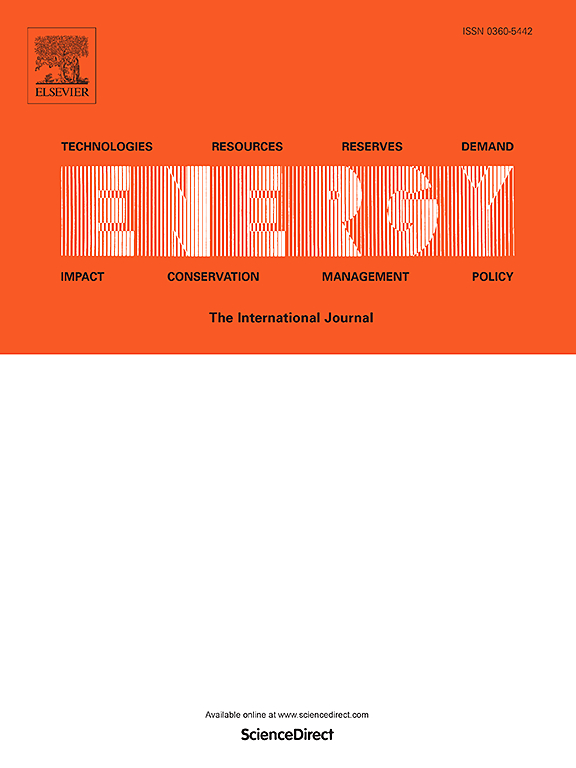Heat resistance analysis and performance improvement of an innovative micro heat pipe PV/T system
IF 9
1区 工程技术
Q1 ENERGY & FUELS
引用次数: 0
Abstract
Reducing heat resistance is an effective means to enhance the performance of photovoltaic/thermal (PV/T) systems. However, there is currently a lack of quantitative research on the heat resistance of PV/Ts, especially under outdoor conditions. To address this issue, experiments were conducted on typical days of spring, summer, autumn, winter in Lanzhou (36.1°N/103.9°E, 1517m), a city in northwest China. After determining the optimal tilt angle to be 45°, the heat resistance of each component of the PV/T panel (EVA, TPT, M − HP, heat conductive adhesive, airfoil fin heat exchanger, and the internal wall of the airfoil fin heat exchanger and water) was analyzed. The heat resistance for internal wall of airfoil fin heat exchanger wall and water was the highest among PV/T collector, reaching 49.05 %. In order to reduce this heat resistance, a rectangular heat exchanger was designed. The heat resistance for the internal wall of the rectangular heat exchanger and water was 31.0 % of the heat resistance for the internal wall of the airfoil fin heat exchanger and water. Numerical simulations have shown that the M-HP-PV/T system equipped with a rectangular heat exchanger has an overall efficiency improvement of 12.8 % compared to an airfoil fin heat exchanger.
求助全文
约1分钟内获得全文
求助全文
来源期刊

Energy
工程技术-能源与燃料
CiteScore
15.30
自引率
14.40%
发文量
0
审稿时长
14.2 weeks
期刊介绍:
Energy is a multidisciplinary, international journal that publishes research and analysis in the field of energy engineering. Our aim is to become a leading peer-reviewed platform and a trusted source of information for energy-related topics.
The journal covers a range of areas including mechanical engineering, thermal sciences, and energy analysis. We are particularly interested in research on energy modelling, prediction, integrated energy systems, planning, and management.
Additionally, we welcome papers on energy conservation, efficiency, biomass and bioenergy, renewable energy, electricity supply and demand, energy storage, buildings, and economic and policy issues. These topics should align with our broader multidisciplinary focus.
 求助内容:
求助内容: 应助结果提醒方式:
应助结果提醒方式:


